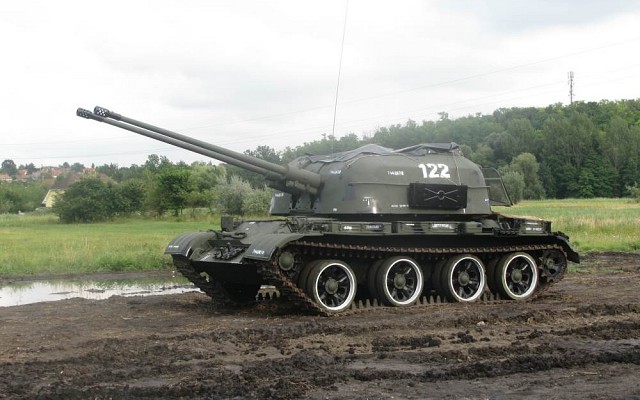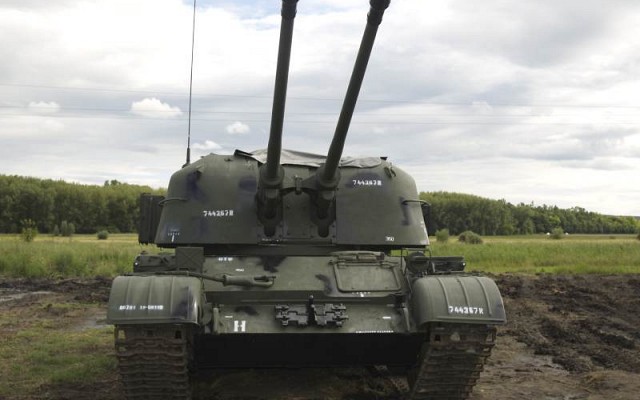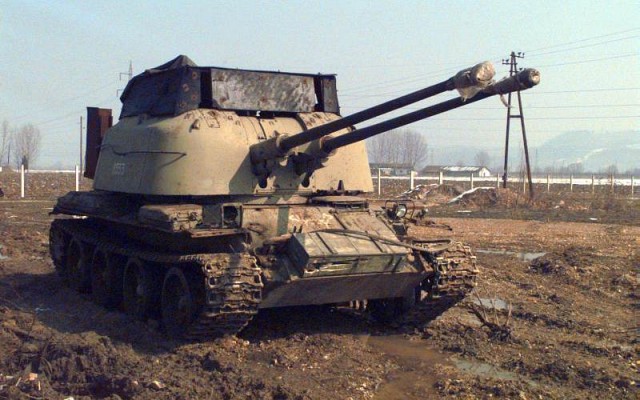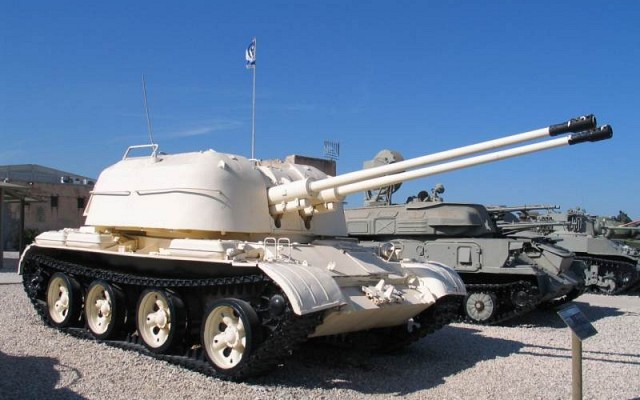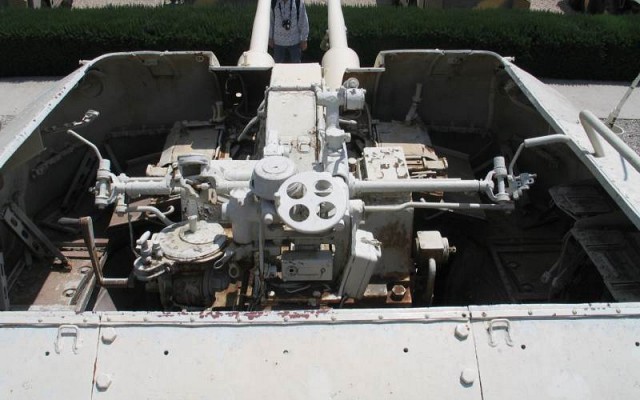ZSU-57-2 Sparka
Overview
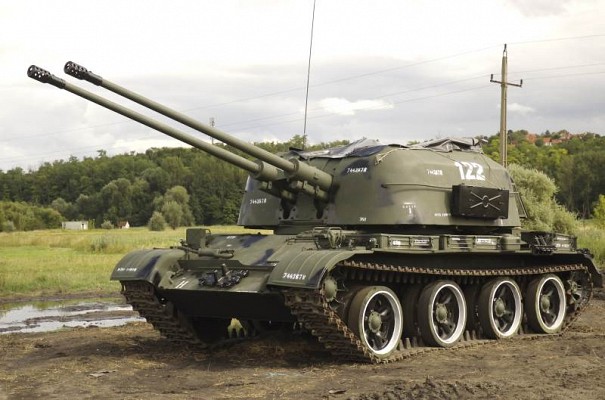
ZSU-57-2
A Hungarian army ZSU-57-2 self-propelled anti-aircraft gun.
Source: VargaA -
© GNU Attribution - Share Alike license
Soviet Union - Kaliningrad No. 58 research institute
North Korea
250 in North Korea
Russian for "pair"
57 ITPSV SU-57-2 (Finnish service)
Description
Introduction
The ZSU-57-2 is a self-propelled anti-aircraft gun of Soviet origin. It was developed in the early 1950's to provide Soviet forces with air defense that could keep up with mechanized forces. The name ZSU stands for "Zenitnaya Samokhodnaya Ustanovka", which is Russian for "anti-aircraft self-propelled mount". The number 57 indicates the caliber and 2 the number of guns. The ZSU-57-2 possesses phenomenal firepower, but proved of limited use against jet aircraft.
Layout
The ZSU-57-2 is based on a modified T-54 tank chassis with only four road wheels. Instead of the normal tank turret a large boxy turret with two large 57mm S-68 autocannon is fitted. The turret has an open top and the gun sights are fitted are fitted on each side of the twin gun mount. Additional crew member manually reload the guns.
Firepower
The ZSU-57-2 possesses incredible firepower with its two 57mm S-68 autocannon. The cyclic rate of fire is 105 to 120 rpm per gun, but its practical rate of fire is limited as it uses five round clips. The maximum effective range is 4 km and altitude is 3 km, although the slant ranges are 12 km and 8 km respectively. A total of 300 rounds are carried.
Fire control
The ZSU-57-2 has no radar or fire control system. Only optical gun sights are fitted. This limits its use to clear weather and daytime. And although the ZSU-57-2 potentially has twice the firepower, the towed S-60 is more effective since it is connected to radar.
Protection
The steel armor provides the crew with some protection from small arms fire and shells splinters. The turret has no roof and during operation the crew is partly exposed. An NBC system and smoke grenade dischargers are both lacking.
Mobility
The T-54 chassis provides good cross country performance, but the speed is limited. A 520 hp diesel engine provides propulsion. The maximum speed is 50 km/h on roads and about 30 km/h in the field. The maximum range is about 420 km and the ZSU-57-2 is not amphibious.
Users
The ZSU-57-2 was in common use with Soviet forces and several Warsaw Pact forces. Large quantities were exported to nations with ties to the USSR and many were used in conflicts in the Middle East, Africa and Asia. In the 1970's most have been replaced by the more capable ZSU-23-4. Those that remain in service are considered obsolete, but remain useful against ground targets.
Details
Media
Related articles
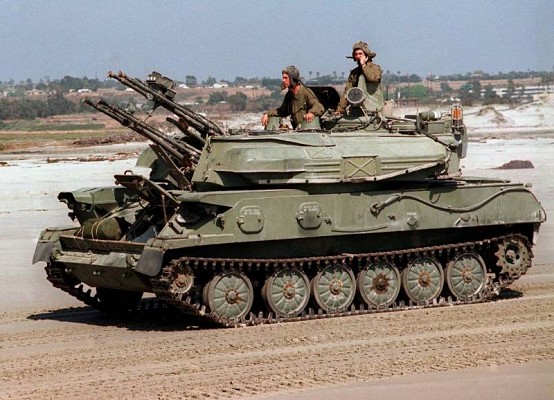
ZSU-23-4 Shilka
The ZSU-23-4 was developed as a more capable successor to the ZSU-57-2.
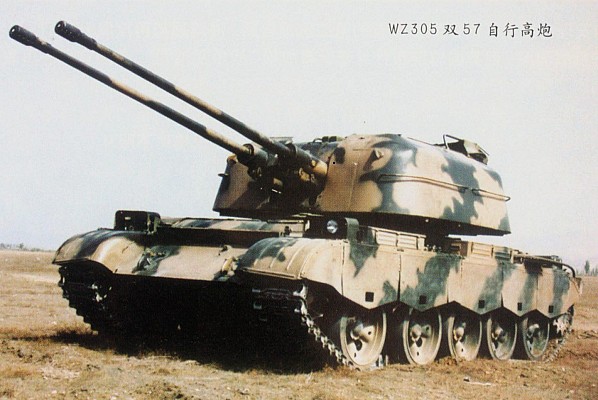
PGZ80
The PGZ80 is a Chinese derivative of the ZSU-57-2. It uses air burst ammunition and can be identified by the 5 roadwheel chassis and side skirts.
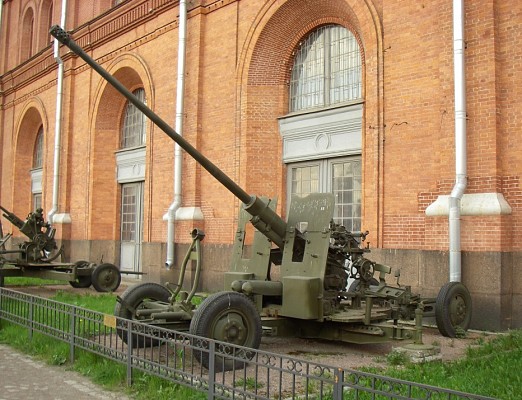
S-60
The S-68 main armament of the ZSU-57-2 is derived from the single barrel S-60 towed anti-aircraft gun.
